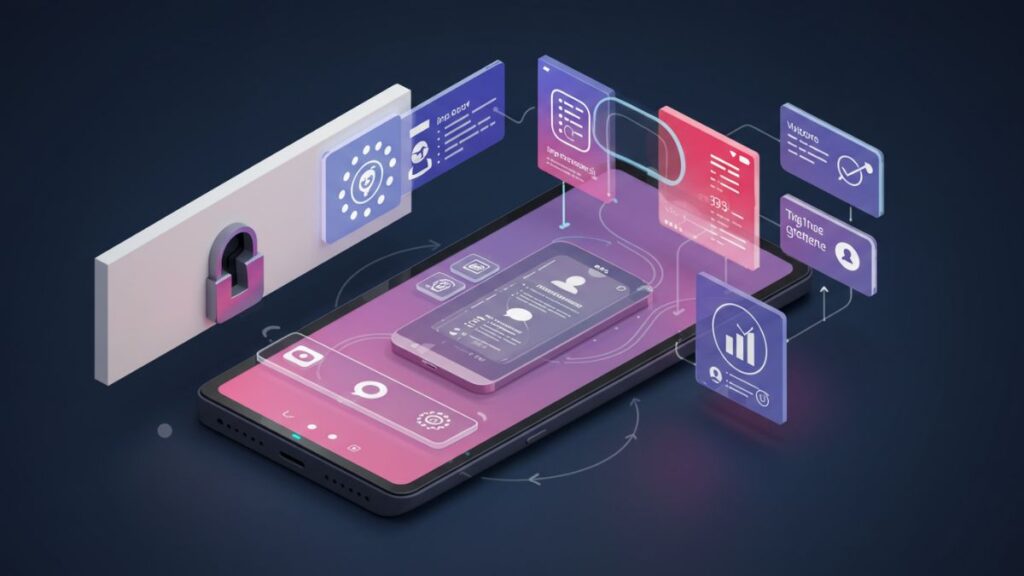In the digital age, user tip screen experience is everything. As businesses strive to engage their customers and streamline interactions, innovative solutions are becoming essential. One such tool making waves in the tech world is the tip screens. This sleek interface offers a unique way to enhance communication between users and systems, bridging gaps that traditional screens often leave unaddressed.
Imagine walking into a café where your order appears effortlessly on an interactive display or browsing through options with just a tap of your finger. Tip screens not only provide information but also create an immersive experience that captivates users’ attention while guiding them seamlessly through their journey. The benefits extend beyond aesthetics; they can significantly improve efficiency and satisfaction rates.
Curious about how this technology works? Or perhaps you’re eager to discover its potential for transforming your business operations? Let’s delve deeper into the fascinating realm of tip screens and unlock their true power together!
Understanding the Technology behind Tip Screens
Tip screens leverage advanced touchscreen technology to create interactive experiences. At their core, these screens utilize capacitive touch sensors that detect the presence of a finger or stylus. This sensitivity allows for precise and responsive interactions.
The integration of software is crucial. User-friendly interfaces are designed to guide users seamlessly through options, whether it’s selecting preferences or viewing additional information. These interfaces often adapt based on user behavior, enhancing personalization.
Moreover, tip screens can incorporate various technologies such as haptic feedback and voice recognition. Haptic feedback provides tactile responses when users interact with the screen, making the experience more engaging. Voice recognition enables hands-free navigation, catering to diverse user needs.
This blend of hardware and software creates an immersive environment where users feel empowered and informed while interacting with digital content. The combination opens doors for innovative applications across industries.
How Tip Screens Enhance User Experience
Tip screens transform the way users interact with digital content. By offering dynamic, context-sensitive tips, they guide users through complex processes seamlessly.
These screens reduce frustration by providing instant assistance. Users no longer need to hunt for help or sift through lengthy manuals. Instead, relevant information appears right when it’s needed.
Moreover, tip screens can personalize the experience based on user behavior. This tailored approach fosters engagement and encourages exploration of features that might otherwise go unnoticed.
The visual design also plays a crucial role. Well-designed tip screens are visually appealing and easy to digest. They complement the overall interface without overwhelming users with text-heavy instructions.
Incorporating interactive elements further enhances their effectiveness. Simple animations or clickable options can make learning feel like an enjoyable part of the journey rather than a chore.
Real-life Examples of Successful Implementation of Tip Screen
Many businesses have embraced tip screen to elevate customer interactions. For instance, a popular café chain integrated tip screens at their checkout points. Customers appreciated the simplicity of selecting their preferred gratuity directly on the screen, leading to a noticeable increase in tips.
In retail, an innovative clothing store used tip screens as part of its mobile payment system. Shoppers could quickly choose how much they wanted to contribute for excellent service right after making a purchase. This not only boosted employee morale but also fostered stronger connections between staff and customers.
A tech startup implemented tip screens during events and workshops. Attendees were encouraged to show appreciation for speakers or facilitators through easily accessible options on digital devices. This resulted in higher engagement levels and positive feedback about the overall experience.
These examples highlight how diverse industries can leverage tip screens effectively while enhancing user satisfaction across various touchpoints.
Tips for Utilizing Tip Screen Effectively in Your Business
To maximize the effectiveness of tip screen in your business, start by ensuring they are user-friendly. A simple interface can encourage more interactions and enhance customer satisfaction.
Placement matters. Position your tip screen where customers naturally pause, such as near checkout counters or at service points. This increases visibility and encourages usage.
Customization is key. Tailor the content on the tip screen to reflect your brand’s voice and values. Use engaging visuals that resonate with your audience.
Incorporate prompts that guide users through their options without overwhelming them. Clear instructions improve usability and drive engagement.
Consider integrating feedback mechanisms too. Gathering insights from customers about their experience with the tip screen can help you make necessary adjustments for better performance.
Don’t forget to promote it! Letting customers know about this feature through signage or staff mentions can increase awareness and utilization rates significantly.
The Future of Tip Screen and Potential Innovations
The future of tip screen is bright, with technological advancements paving the way for innovative features. Imagine interactive displays that adapt in real-time to user preferences. This could personalize content and recommendations based on previous interactions.
Voice recognition technology may also make its way into tip screens. Users could simply speak their requests or feedback, creating a hands-free experience that enhances convenience.
Augmented reality (AR) integration is another exciting prospect. Picture customers engaging with products through virtual overlays, enriching their understanding and decision-making process.
Moreover, data analytics will play a crucial role in optimizing tip screen functionality. Businesses can gather insights about customer behavior and adjust offerings accordingly.
As developers explore artificial intelligence capabilities, we might see predictive algorithms suggest tips even before users ask for them. The potential is vast and holds promise for revolutionizing how consumers interact with digital interfaces across various sectors.
Conclusion:
The rise of tip screen is reshaping how businesses interact with customers. These digital interfaces are not just a tool; they represent an evolution in user engagement.
As technology advances, the integration of tip screens will become smoother and more intuitive. Businesses that embrace this trend stand to reap significant benefits.
User experience is at the heart of modern commerce. Adapting to these changes can create lasting connections between brands and their clientele.
By focusing on effective implementation, companies can unlock new revenue streams while enhancing customer satisfaction. The potential for innovation in this space remains vast.
FAQ’S
What is a tip screen?
A tip screen is an interactive display feature that enhances user engagement by providing context-sensitive information or prompts. It helps guide users through processes, offering tips and suggestions based on their interactions.
How do tip screens improve user experience?
Tip screens provide clear, concise information at the right moments. They help reduce confusion, streamline navigation, and increase overall satisfaction. Users appreciate having guidance without feeling overwhelmed.
Are tip screens suitable for all types of businesses?
Yes, tip screens can benefit various industries such as retail, hospitality, e-commerce, and education. Their adaptability makes them useful for any business looking to enhance customer interaction.


